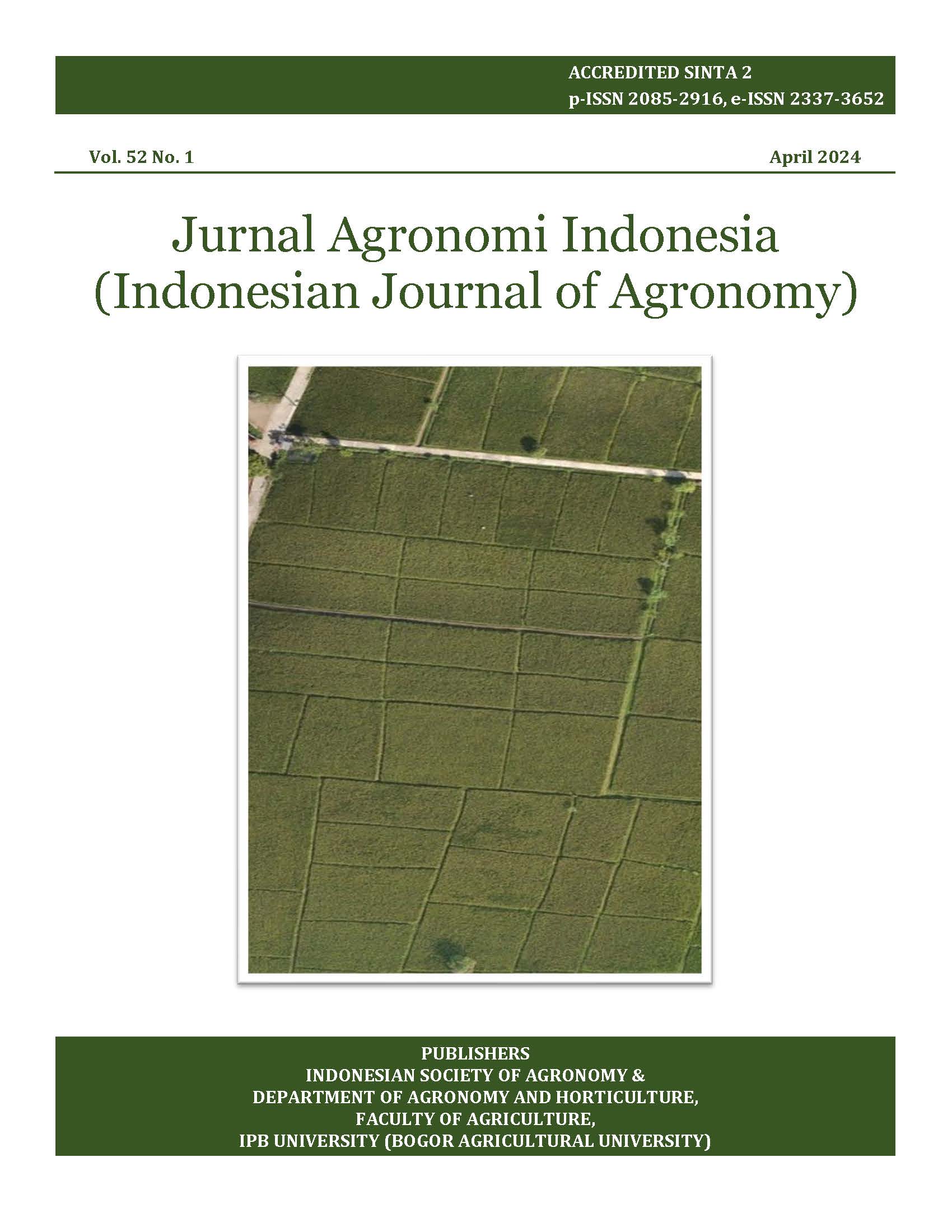Seed tuber production of potato from stem cuttings, planting densities, and paclobutrazol concentrations
Abstract
Rapid multiplication of potato seed using cuttings is a pivotal strategy for ensuring seed availability. This study aimed to elucidate the interactive effects of node number, paclobutrazol concentration, and planting density on seed potato and cutting productions. The study consisted of two experiments. The first experiment evaluated two genotypes (Granola and PKHT-6) with one or two nodes per cutting. The second experiment investigated planting density (one, three, or five plants per polybag) and paclobutrazol concentration (0, 15, 30, and 45 mg L-1). Notably, node number did not significantly influence cutting success, despite genotype-specific and interactive effects on vegetative parameters like plant height, stem diameter, leaf number, and root length. Planting density had no statistically significant impact on all vegetative parameters but demonstrably affected all production parameters. Conversely, paclobutrazol concentration significantly affected all vegetative parameters and influenced all production parameters except tuber weight per plant. From the results of this research, the use of single cutting is more recommended because it will obtain more plant material compared to two-node cuttings. Thus, in a more global context of potato development, this has the potential to increase the production of potato seeds from cuttings twice as much as the current seed production. The use of three plants/polybags is more recommended since it will produce more tuber but not different with five plants, and the use of paclobutrazol 15 mg L-1 is also recommended to increase the number of tubers. In this way, the production costs of G0 potato seeds can be reduced so that the availability of G0 potato seeds will be more guaranteed and affordable.
Keywords: Granola; PKHT-6; rapid multiplication; tuber production













